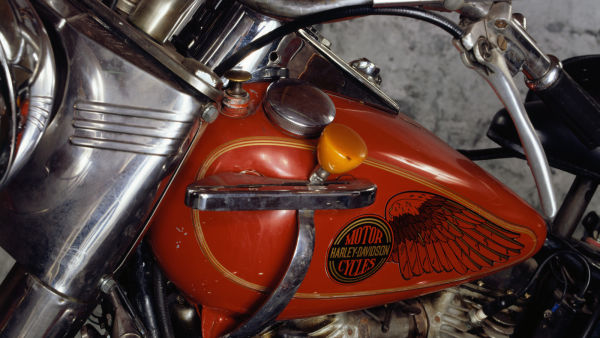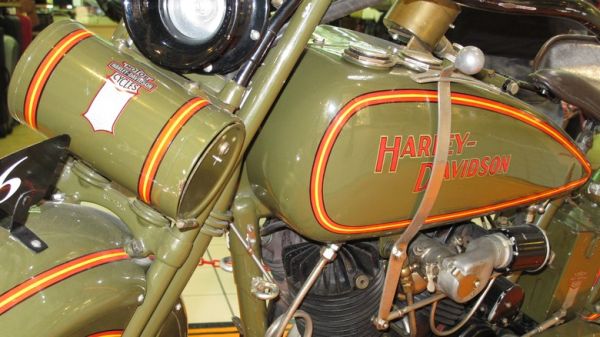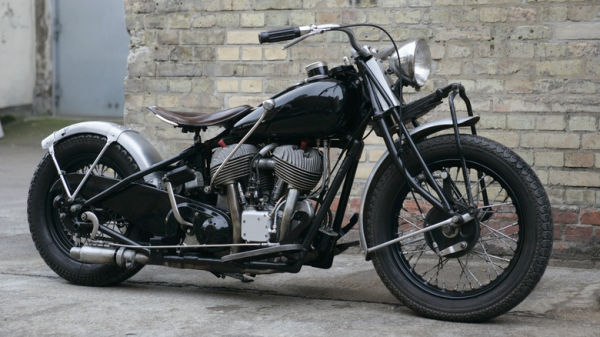A “suicide shifter,” or “suicide clutch,” is a slang term for a foot-operated clutch pedal with a hand-operated gear shifter on a motorcycle. It operates similarly to a manual transmission on a car or truck. The rider has to engage the clutch pedal using their left foot and change gears using a lever mounted next to the gas tank, or on the left side of the engine. This method of riding a motorbike was first introduced by Harley-Davidson Motorcycle in 1915 to operate its then-new three-speed transmission.
Advertisement
However, adding the word “suicide” to something prompts people to presume it’s dangerous. The answer to whether or not suicide shifter motorcycles are safe is subjective because it depends on the rider’s skill and confidence. However, this style is considered “old school,” so riding a motorcycle with a foot-clutch pedal and hand-shift today is like smoking hand-rolled cigarettes, carrying a single-action revolver, or listening to music exclusively on vinyl. It requires dedication and a lot of muscle memory.
For comparison, modern motorcycles with manual transmissions utilize a handheld clutch lever and foot-operated shifter to change gears. This method allows riders to always keep both hands on the handlebar when in motion. Motorcycles with a semi-automatic transmission also enable riders to change gears without worrying about engaging the clutch at all. A motorcycle with an automatic transmission, or continuously variable transmission (CVT), requires throttle input from the rider without physically changing gears.
Advertisement
Why is it called a suicide shifter?
Similar to the “Sissy Bar” moniker for a bike’s rear, it is difficult to pinpoint the exact origins of the phrase “suicide shifter.” Other less intimidating names for this style of manual transmission riding is “jockey shifter,” “tank shifter,” or “foot clutch.” The fundamental challenge of riding a motorcycle while changing gears with one hand and being unable to put your left foot down while it’s in gear can be enough for certain people to judge with potentially lethal connotations.
Advertisement
Depending on whom you ask, some say “suicide shifter” originated from a myth of a rider’s foot slipping off the clutch pedal at a stoplight while in gear and being shot forward into traffic. Others say the term gained traction during the 1960s when custom bike builders began removing the front brakes to make the front wheel and fork look less cluttered. As a result, riders with a hand shift, spring-loaded foot clutch and no front brake had difficulty riding, particularly on steep grades.
Many expert motorcycle riders may scoff at those referring to a foot operated clutch as a “suicide clutch” for being unnecessary and misinformed, but there’s no denying the phrase catches one’s attention. One of the most recognized motorcycles to feature a “suicide shifter” was the Harley-Davidson Panhead, which featured a tank-mounted hand shifter throughout its production life from 1949-1965. However, by 1952, Harley-Davidson had introduced a hand-operated clutch and foot shifter as an option for its customers as well.
Advertisement
Cool doesn’t always mean safe
As far as the U.S. government is concerned for this type of motorcycle shifting: By 1975, the National Highway Traffic Safety Administration had officially standardized motorcycle hand and foot control patterns under Federal Motor Vehicle Safety Standard No. 123, specifically elaborating that the choice was made to “minimize accidents caused by operator error.”
Advertisement
Part of the charm and lifestyle of riding motorcycles is the allure of danger. As a result, there are three main schools of thought: Those who live to ride, others who appreciate motorcycles but only from afar, and those who maybe see anything on two wheels as a cruise missile to an early grave. Regardless of where one stands, most people agree that motorcycles are cool because of the risk involved.
Are suicide shifter motorcycles safe? They’re not inherently unsafe — danger is arguably more present when other modifications are made as well, such as the aforementioned removing of the front brake — but they do offer a retro Harley-Davidson riding experience with a level of bragging rights. If you belong to the two-wheeled subculture that indulges in its association with outlaws, leather bomber jackets, sun scorched tattoos, loud exhaust pipes, switchblades and chrome accents, a foot clutch with a jockey shifter may be the ideal modification for your motorcycle.
Advertisement










